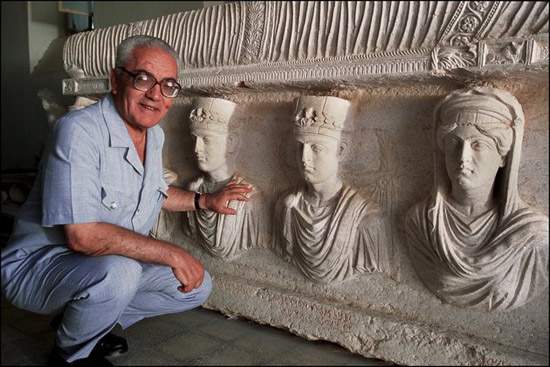Discovery of the remains of Khaled al-Asaad, the archaeologist killed by Isis, announced
The remains of Khaled al-Asaad, the brave Syrian archaeologist who for many years (1963 to 2005) was the director of the Palmyra archaeological site, would be found in Syria, barbarically tortured and murdered at the age of 80 by Isis on August 18, 2015, for not wanting to reveal to terrorists the location where the site’s archaeologists had hidden some important Palmyra works to prevent them from falling into the hands of Isis militiamen, who would sell them illegally to finance their terrorist actions (“There is nothing here but in your imagination: them of Palmyra lies in its eternity,” he allegedly replied to the terrorists, according to what his son Waleed reported in an interview withAvvenire). A gesture of great value and love for art that the scholar, recognized by the international community as one of the leading scholars of Palmyra, paid with his life.
Reporting the news of the discovery of al-Asaad’s remains was the Syrian government information agency Sana. According to the agency, the remains were found along with the remains of two other people in the Kahlul area, east of Palmyra. They have now been transferred to Damascus for DNA testing, which is to provide actual proof that it is indeed Khaled al-Asaad.
Many honors have been paid to Khaled al-Asaad since his assassination: Syria posthumously awarded him the Order of Civil Merit, he was inducted into the Garden of the Righteous in Milan as a “Righteous of Nations,” he was decreed a “Martyr of Science” by the Academy of Philomats, the area of the Arsenals of the Republic of Pisa was named after him, and he was awarded the International Archaeological Discovery Award, an award given each year by the Mediterranean Archaeological Tourism Exchange to the most important archaeological discovery of the year, and then again the Museum of the City of Aquino, the Space of Cultures at Mudec in Milan, the Phoenician sarcophagi room at the Archaeological Museum of Palermo, and an edition of the FAI’s “Places of the Heart” were named after him.
Our magazine dedicated issue 6 of our print magazine (June-July-August 2020) to the memory of Khaled al-Asaad, which includes a debate with the positions of various experts on art in war scenarios. Also in our magazine, in October 2015, we translated excerpts from one of his articles on Palmyra into Italian.
Image: Khaled al-Asaad.
 |
| Discovery of the remains of Khaled al-Asaad, the archaeologist killed by Isis, announced |
Warning: the translation into English of the original Italian article was created using automatic tools. We undertake to review all articles, but we do not guarantee the total absence of inaccuracies in the translation due to the program. You can find the original by clicking on the ITA button. If you find any mistake,please contact us.




























